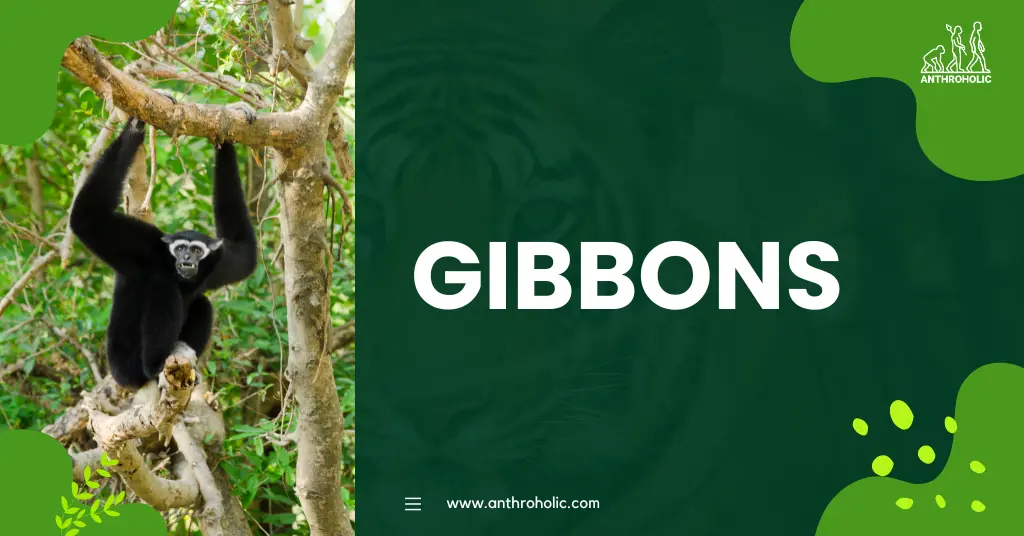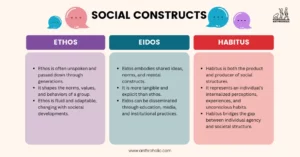AI Answer Evaluation Platform Live Now. Try Free Answer Evaluation Now
Gibbons
Gibbons, often referred to as “lesser apes”, are members of the primate family Hylobatidae. These agile and highly social creatures stand apart from their larger relatives, the great apes, due to their smaller size and unique characteristics.

Morphology and Locomotion
Gibbons exhibit sexual dimorphism, meaning males and females have distinct physical traits. The average weight for a gibbon ranges from 4.5 kg to 13 kg, with males generally being slightly larger than females [1].
Most prominent among gibbon features is their arm structure, significantly longer than their legs, allowing for incredible acrobatic abilities. These include “brachiation”, a mode of locomotion in which they swing arm-over-arm through the trees at speeds up to 55 km/h [2].
Their skeletal adaptations for this style of locomotion include:
- Elongated arm and finger bones
- A highly mobile wrist joint
- An adaptation that allows a full rotation of the arm at the shoulder joint
Habitat and Distribution
Gibbons are native to the forests of Southeast Asia, including countries such as Indonesia, Thailand, and parts of China [3]. A table showcasing the four main genera of gibbons and their respective distributions is represented below:
| Genus | Species | Distribution |
|---|---|---|
| Hylobates | 9 species | Thailand, Malaysia, Indonesia |
| Hoolock | 2 species | Northeast India, Bangladesh, Myanmar, South China |
| Nomascus | 7 species | Vietnam, Laos, Cambodia, China |
| Symphalangus | 1 species | Sumatra, Malay Peninsula, Borneo |
Social Structure and Communication
Gibbons live in small, monogamous family groups consisting of a mated pair and their offspring. This social structure is unique among apes and allows for strong bonds between family members [4].
Communication plays a crucial role in gibbon society. They utilize complex vocalizations, known as ‘songs’, which serve multiple functions, including territory establishment, mate attraction, and strengthening pair bonds. Gibbon songs are remarkably species-specific and complex, showcasing the animals’ cognitive abilities.
Diet and Feeding Habits
Gibbons are predominantly frugivorous, with fruits constituting approximately 50-90% of their diet. They have a particular preference for figs, due to their high nutritional value and year-round availability. However, their diet also includes leaves, flowers, and even small insects or birds. Gibbons play an essential role in forest ecosystems as seed dispersers, contributing to forest regeneration and biodiversity.
Reproduction and Lifespan
Gibbon pairs mate for life, a rarity in the animal kingdom. Females give birth every two to three years, usually to a single offspring. The gestation period is approximately seven months. Newborn gibbons are completely dependent on their mothers for the first two years of life.
The average lifespan of a gibbon in the wild is about 25 years, while in captivity, they can live up to 40-50 years.
Conservation Status and Threats
According to the International Union for Conservation of Nature (IUCN), most gibbon species are endangered or critically endangered. The primary threats include:
- Deforestation and habitat loss due to agricultural expansion, logging, and human settlement
- Illegal pet trade
- Hunting for traditional medicine and bushmeat trade
Conclusion
Gibbons are a unique and captivating group of primates. Despite their smaller size compared to other apes, they boast remarkable abilities, from their swift brachiation to their complex vocalizations. However, with the majority of gibbon species facing the threat of extinction, urgent and sustained conservation efforts are needed. Understanding and appreciating these fascinating creatures is the first step towards ensuring their survival.
References
[1] Geissmann, T. (1995). Gibbon systematics and species identification. International Zoo News, 42, 467-501.
[2] Cannon, C. H., & Leighton, M. (1994). Comparative locomotor ecology of gibbons and macaques: selection of canopy elements for crossing gaps. American Journal of Physical Anthropology, 93(4), 505-524.
[3] Mootnick, A., & Groves, C. P. (2005). A new generic name for the hoolock gibbon (Hylobatidae). International Journal of Primatology, 26(4), 971-976.
[4] Palombit, R. A. (1996). Pair bonds in monogamous apes: A comparison of the siamang Hylobates syndactylus and the white-handed gibbon Hylobates lar. Behaviour, 133(5-6), 321-356.




